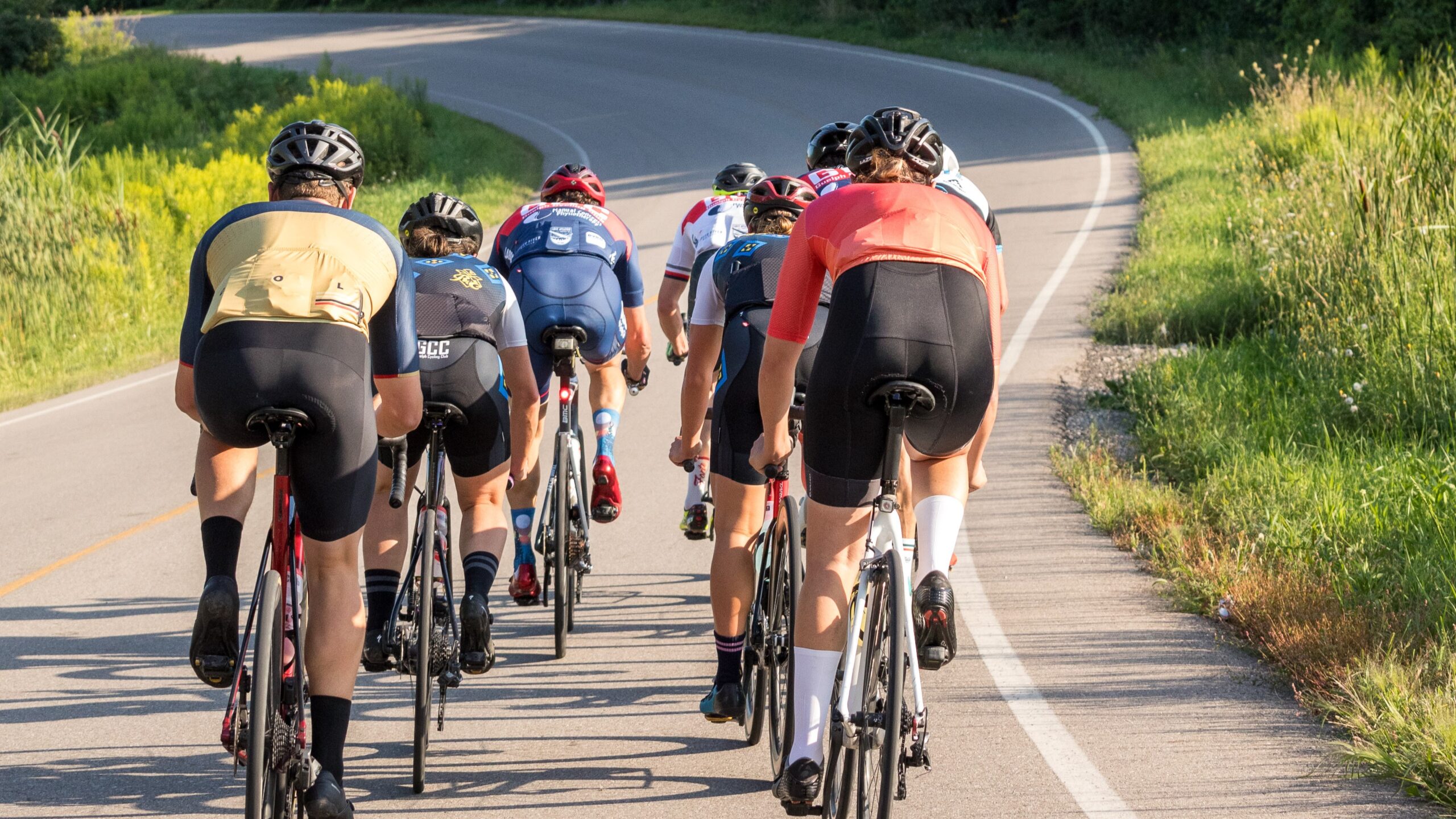Constant Rotation is a great way to move riders of similar ability, at an efficient pace, utilizing a double paceline.
We typically reserve Constant Rotation for the R3 speed Group (34-36kph avg) on Tuesday evenings at the TAM Ride. Riders practice working together during the entire ride. We have adopted the Track Cycling name ‘Team Pursuit’ for this group, as they need to communicate and stay together to make this work well.
The simplest way to describe Constant Rotation is there are two pace lines side by side moving down the road a two different speeds. We typically run it with the left side line going slightly faster than the right side line. Both speeds are different from each other, but all riders are completely constant within their line with no surging. Think of it as a slightly faster speed group in a single line passing a slightly slower speed group in a single line. Fast Line, slow line.
Then, a rider at the front of the faster group wants to join the slower group, they do it off the front of their line as they begin to pass the slower right side line. At the same time, a rider in the slower group wants to join the faster group, they do it off the back of the slower right side line just as the last rider of the faster left side line is passing by. This begins the rotation. It is very similar to Social Paceline, only there is no pause at the front – riders constantly rotate ‘through’.
There is ideally only one acceleration and one deceleration per full rotation as riders circulate. When moving from the back of the right side line to the back of the left side line there is a gentle acceleration to match the slightly higher speed of the left side riders. And conversely, when the front rider in the advancing left side line has been told they are clear to move across and on to the front of the right side line, they move over to the right while gently decelerating to match the speed of the slightly slower riders in the right side line. That is the most difficult move in Constant Rotation as the rider is trying to ‘speed match’ down to the rider behind them in the slower line. The key is verbal communication. Everyone needs to talk and be willing to receive input. Hence, the name ‘Team’ Pursuit. We have been very successful in teaching riders how to do this for years. It is also paramount that all riders have 360 degree awareness at all times.
The rider at the front of the right side receiving a decelerating rider must be willing to help them understand how much to back off (or speed up) to speed match perfectly. After a while, it becomes ingrained and riders know instinctively how much, or how little, to decelerate and don’t need to be told anymore.
As all of this continues, the double paceline appears to be rotating as the group rides down the road. It gets quite easy with practice.
Constant Rotation is really great to be a part of when everyone is working well together. Just ask any of the regular R3 riders!
Typical problems:
- A rider doesn’t decel enough when moving to the right side line at the front.
- This results in a gap on the front of the right side line. Some riders behind tend to accelerate to close the gap – that’s the wrong thing to do. The right thing to do is to maintain the constant speed of the line. The next rider on the left can come over and slot in, or… the rider ‘down the road’ will realize their error and come back into line. Leaving there alone usually gets the message across.
- A rider accelerates once the rider in front of them moves from the left side to the right.
- This usually creates a gap on the left line and often the tendency for the rider behind is to ‘chase’ or surge – not good. Never chase a surging rider. Again, the right thing to do is to maintain the constant speed of the line and continue with the rotation and let the rider know that they need to keep the a constant speed. The only acceleration is at the back of the line, never the front.


